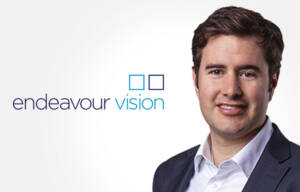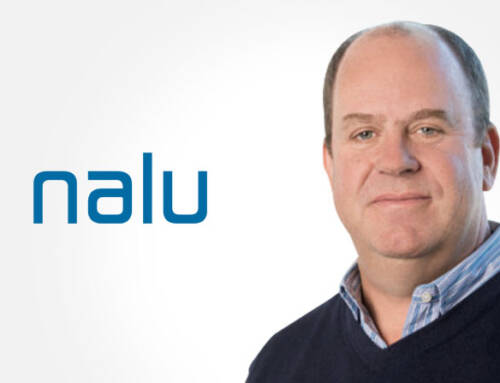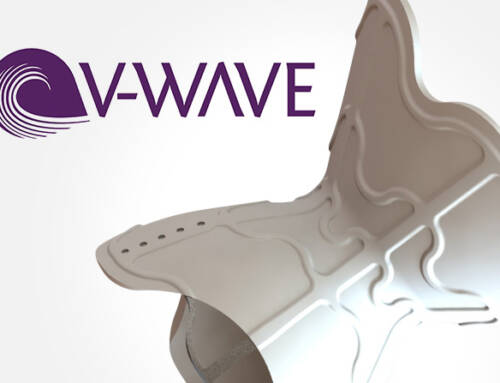
Whether visiting the dentist for a regular scale-and-polish, getting braces as a teenager, veneers as an adult, or receiving an emergency crown, we all rely on dentistry throughout our lives to maintain our oral health. Globally, USD 350bn is spent on dentistry annually, and this figure is only set to grow — driven by an aging population, improved access to dental care, and increased focus on aesthetics and preventative care. Most critical to the sector’s potential growth trajectory is the staggering lack of uptake of dental care: of 4bn people with missing teeth, each year only 20m people receive implants, while 300m get crowns or bridges; meanwhile, of the 5bn people with crowded or crooked teeth, 500m could afford to get braces or aligners, but only 15m actually do. As a result, dentistry and more specifically, dental products, is an attractive investment sector to evaluate.
In 2021, Endeavour Vision invested in InBrace— a novel behind-the-teeth teeth straightening solution. Building on this, we continue to stay alert to new developments and investable propositions. Additionally, we plan on leveraging the extensive expertise of our new Operating Partner, Marco Gadola. Marco was CEO of Straumann, one of the largest players in the dental sector between 2013-2019. During his tenure, Straumann doubled its revenue and its market capitalisation increased by over 5x.
We sat down with our Investment Director, Fernando Pacheco, to learn more about the dental sector, how technology is transforming the field, and how we assess emerging technologies for investment.
Could you briefly describe the current market for the dental sector?
The current market for the dental devices sector is a significant one at USD 31bn, with predicted long-term (LT) growth of 4-5% annually. Within this, some sub-sectors stand out as more innovative, driving higher growth rates. On the specialty side, orthodontics (USD 5bn, 10% LT growth) and implants (USD 4.5bn, 4-5% LT growth) are attractive. On the general dentistry side, new technologies have been accelerating the preventative, restorative and digital markets (USD 12bn, 4-5% LT growth).
A few strategic big players dominate the field. DentsplySirona, Align Technologies, Envista, and Straumann each drive around USD 2-4bn in annual sales. Each have their category strengths, but play in more than one category within the dental sector, and are active buyers. Between them, they have made 20 acquisitions since 2010. That said, private equity has accounted for eight transactions since 2017, supported by the highly profitable and predictable growth in certain sub-sectors.
What have been the most transformative developments in the sector over past decade and what’s behind these?
Much has changed over the past decade, primarily thanks to 1) digitalisation, 2) expansion of dental services organisations (DSOs), and 3) novel technologies enabling greater access to speciality procedures.
Firstly, the advent of digital dental technologies has transformed diagnosis and treatment planning — increasing speed, patient convenience, and practice profitability. The plaster-cast dental impressions we recall from our childhood are now increasingly rare. Instead, today over 50% of US dental practices have access to scanners that can create 3D scans of one’s mouth in a few minutes (intraoral scanners). The next step will be digitalising the manufacturing and customisation of dental appliances such as crowns and veneers. Emerging technologies mean that it may be possible to profitably produce these chairside in a single visit, without having to refer out to dental labs and waiting weeks between appointments. Perhaps most notable is the growth in 3D printing, already in around 10% of US practices and expected to grow to 50% in the coming years as applications increase and the technology improves.
Secondly, the expansion of DSOs has changed the way practices operate. Traditionally, dental practices were owned by a single dentist or group of dentists (i.e., dentist owned). However, over the past decade, consolidation has increased tremendously in the form of DSOs (i.e. organisations that acquire and then operate multiple dental practices). They either acquire existing practices or build new ones — increasing growth, efficiency, and profitability with standardised operating approaches. In the US, the top 3 DSOs have over 1000 practices each: Heartland (>1600), Aspen (>1000) and Pacific (>900). In Europe, consolidation is more recent, and the largest group (Colosseum) operates over 620 practices across 11 countries. In 2015, DSOs accounted for ~10% of the US market, however this is steadily growing and over half of practices are expected to be DSO-owned by 2025. This changes the landscape for companies selling dental products, such that a separate, dedicated DSO strategy becomes critical.
Finally, the advent of new technologies and digitalisation is improving access to care by enabling general dentistry practitioners to perform techniques previously performed by specialists. By reducing the requirement for referrals, general dentists can perform procedures such as implants, orthodontics, and root canals in-house — simplifying care for patients and improving profitability for the practice.
With patients typically paying out-of-pocket for dentistry, how resilient is the sector to macroeconomic instability?
In the US, 60% of adults and 90% of children have some form of dental insurance. Insurance typically covers routine, preventive or emergency procedures, but cosmetic procedures tend to be largely out-of-pocket. In Europe, dental insurance varies, but is less prevalent as it is normally tied to statuatory health insurance (e.g., Germany) for basic dental care needs, often supplemented by private insurance. Nonetheless, out-of-pocket spend is a signficiant portion of dental spend globally.
Unsurprisingly, macroeconomic instability does impact the sector in a nuanced way. While certain elective, cosmetic procedures such as veneers or adult aligners are less resilient, procedures that target older patients such as implants are generally resilient, as this class of patients has a higher purchasing power. Likewise, coming-of-age procedures such as orthodontics are also likely to prove resilient. Emergency or non-elective procedures such as crowns or root canals are similarly less likely to be affected, due to the essential nature of these treatments.
In terms of effects on dental practices, while near-term capital investments suffer (e.g., office expansions or equipment purchasing), such instability has been known to further sharpen dentists’ focus on the highest ROI procedures (e.g., implants). As a result, it can even accelerate growth in some of the sectors we most focus on within dental.
What are some of the sector-specific investment considerations you look at when investing in dental?
Dentistry is both tech-driven but also a conservative profession. Brand loyalty and history matters, which makes shifts in market share slow to come by.
Moreover, scaling is difficult, due to the large number of practicing dentists (~160k in the US) and the fact they are widely dispersed across the country. This means that (often consolidated) distributors have a lot of clout. Moreover, it has historically been a space where strategics and prospective buyers have waited on the sidelines until their target reached profitability – more so than other parts of medtech.
So, venture capital in the dental sector requires certain considerations to maximise chances for success. Amongst these are: 1) commercial efficiency and scalability 2) improvement in practice economics 3) capitalising on DSO growth. These three criteria guide us as we review companies in the dental space, while remaining disciplined on exit potential — whether that’s a potential ‘home-run’ IPO (e.g., like Align Technology – ALGN) or a tuck-in M&A for a couple of hundred million dollars.
Which emerging technologies do you find most compelling as an investor?
Digital dentistry is enabling much more cost-efficient, chairside personalisation of dental appliances. 3D printing, for example, is poised to have a significant impact on how dentists practice, increasing patient convenience by enabling single-visit dentistry while improving practice profitability. We anticipate such personalisation will also make it to sectors that have traditionally resorted to ‘modular’ approaches to deliver personalisation, such as implants (i.e., by having implants customised to the original extracted tooth root). Furthermore, orthodontics, in aligners or wires and brackets, will continue to benefit from this increased digital-driven personalisation (e.g., as with InBrace), reducing treatment times and reducing the burden of patient compliance. Finally, we think that several innovations — including robotic crown preparation, percussion-based crack detection, or novel at-home hygiene approaches — will continue to impact the general dentistry workflow.





